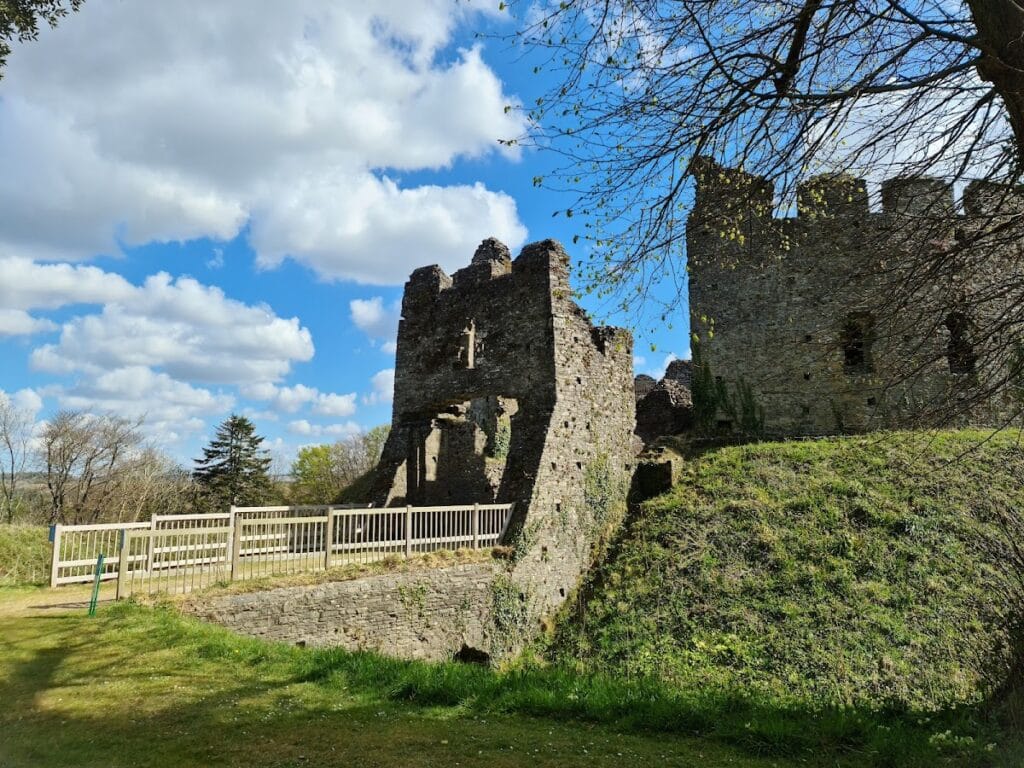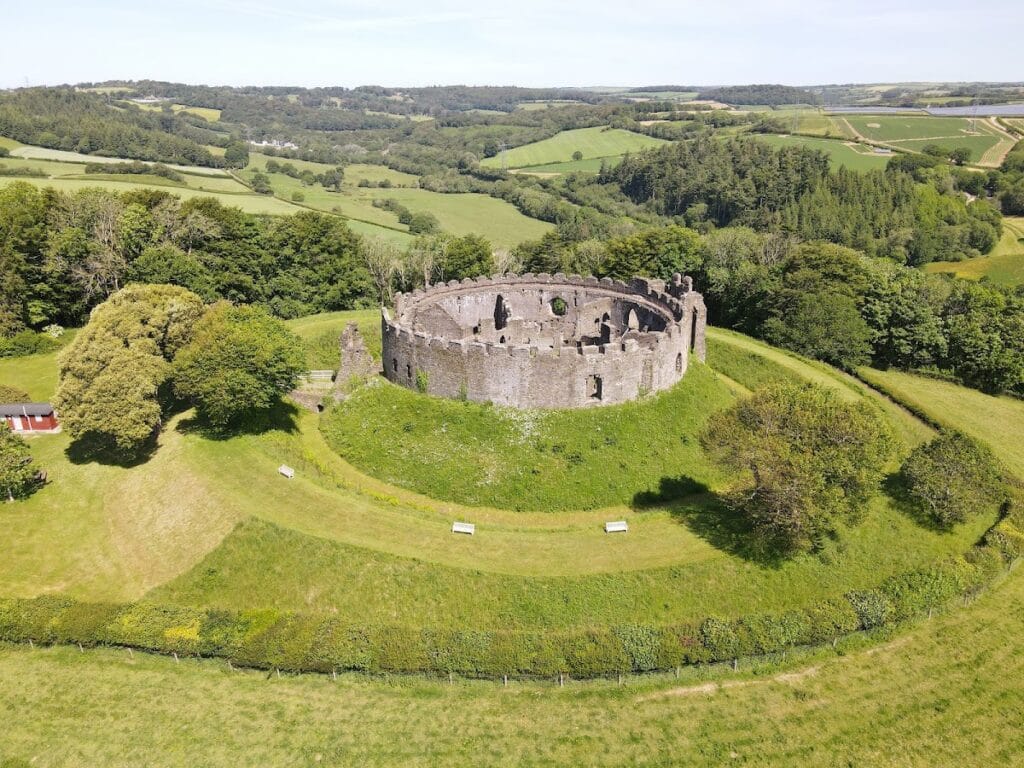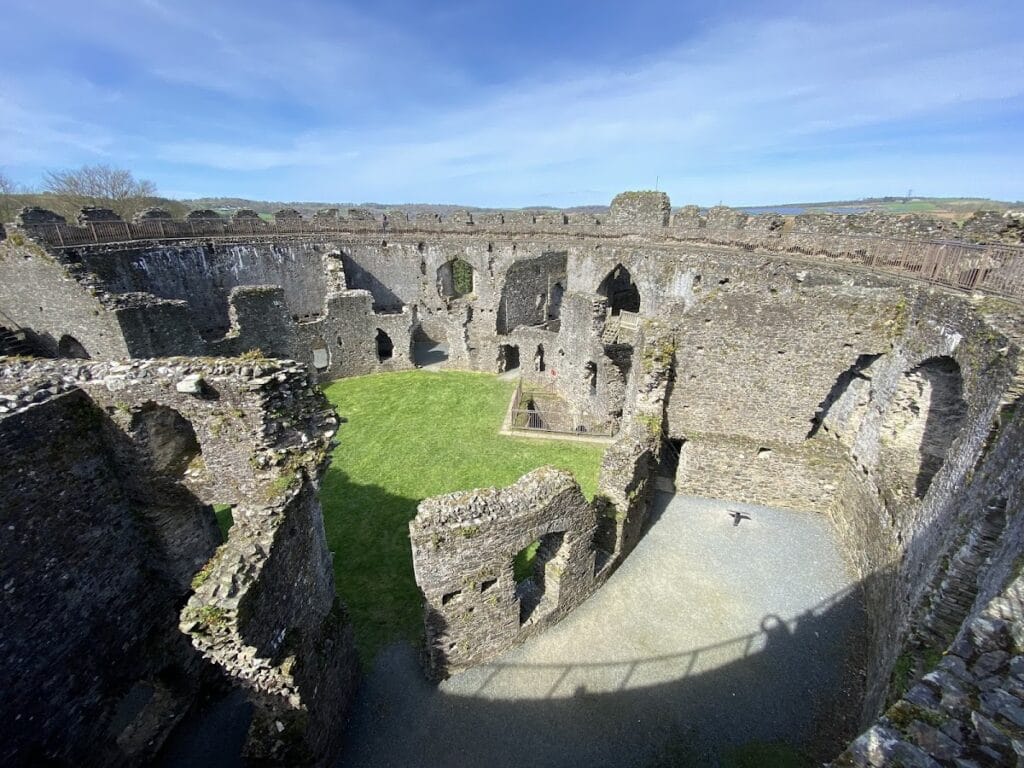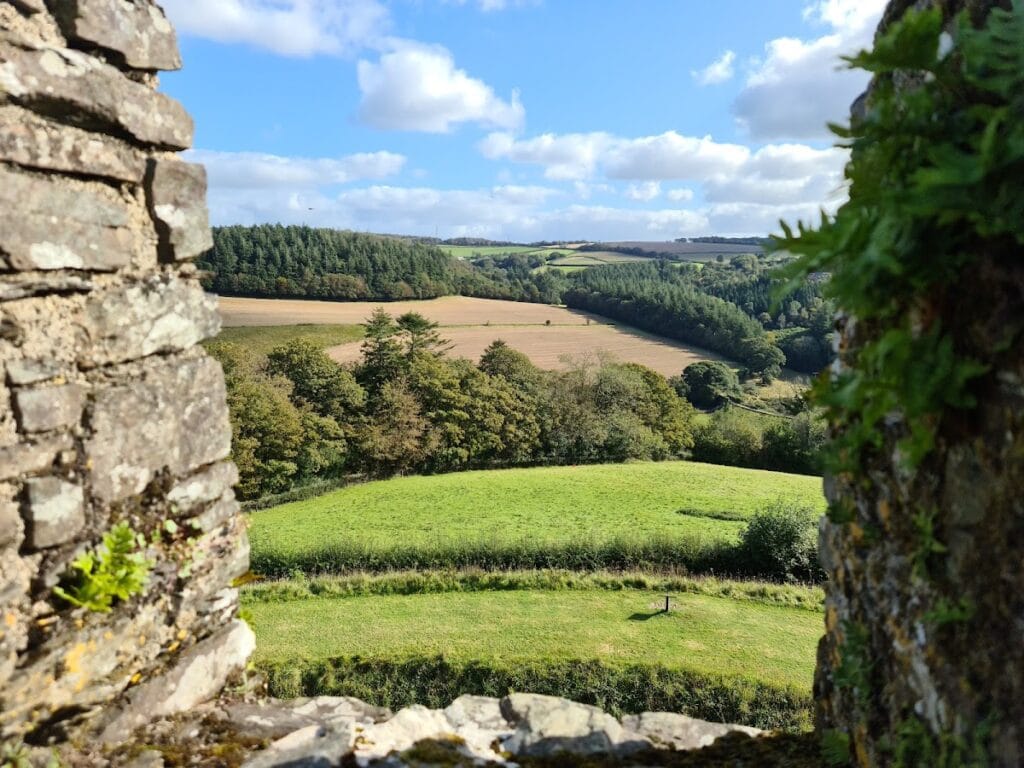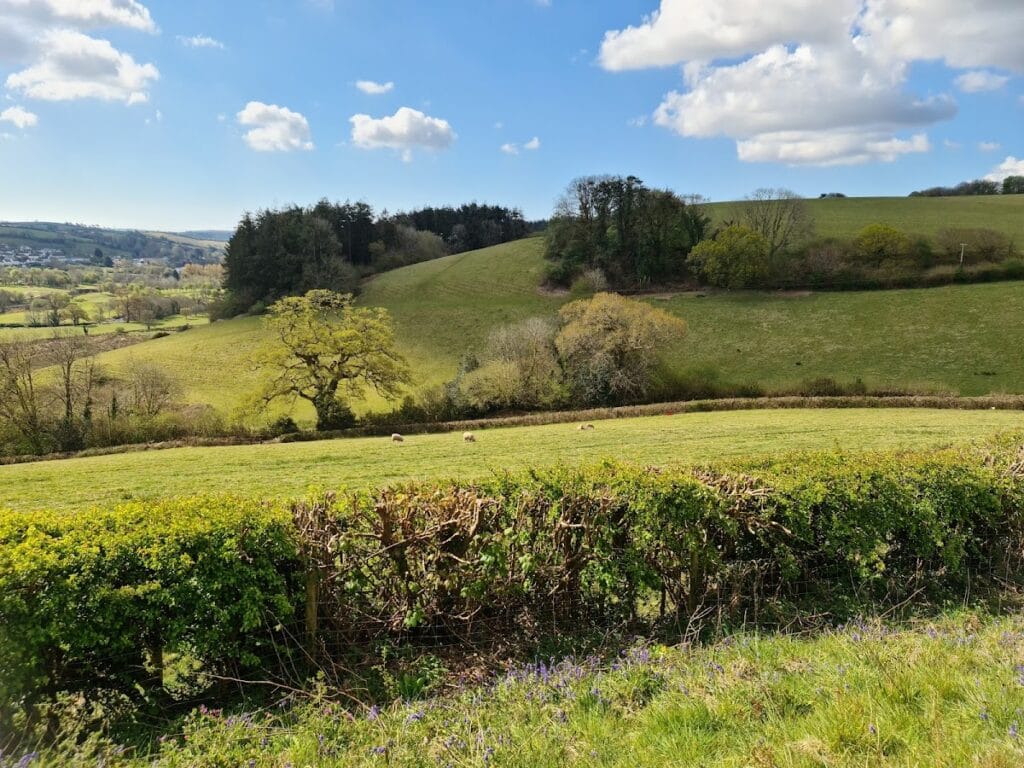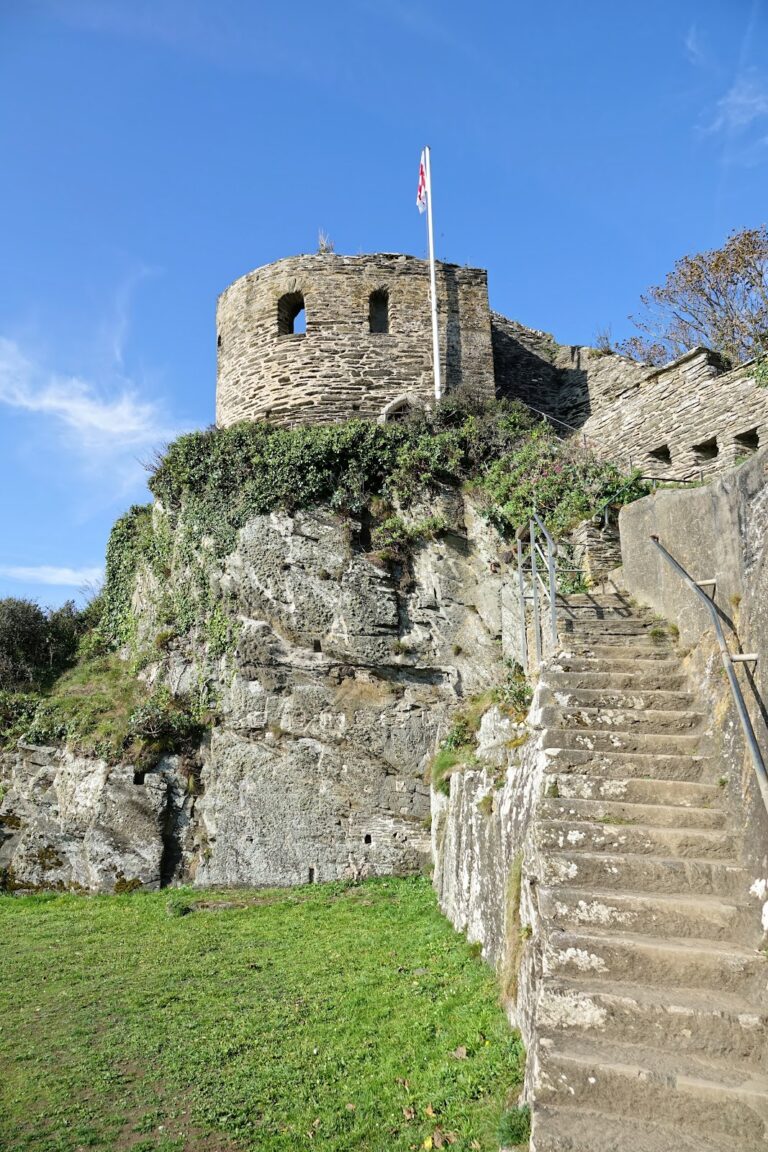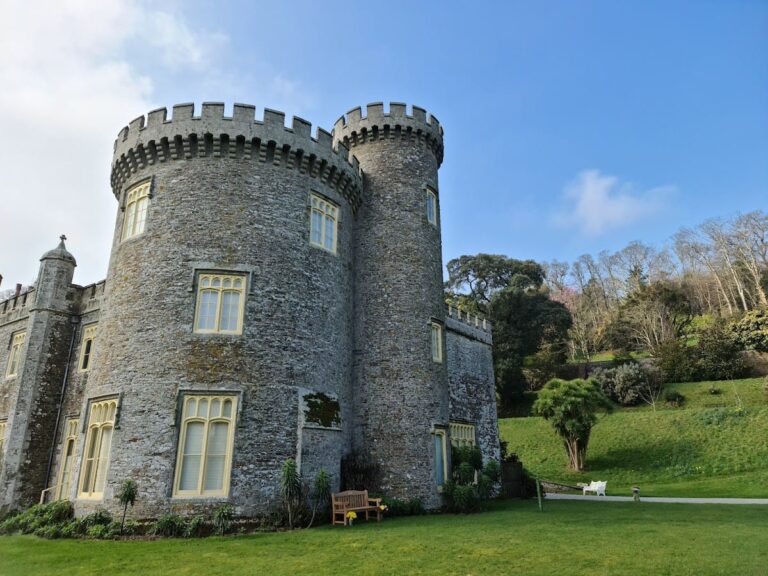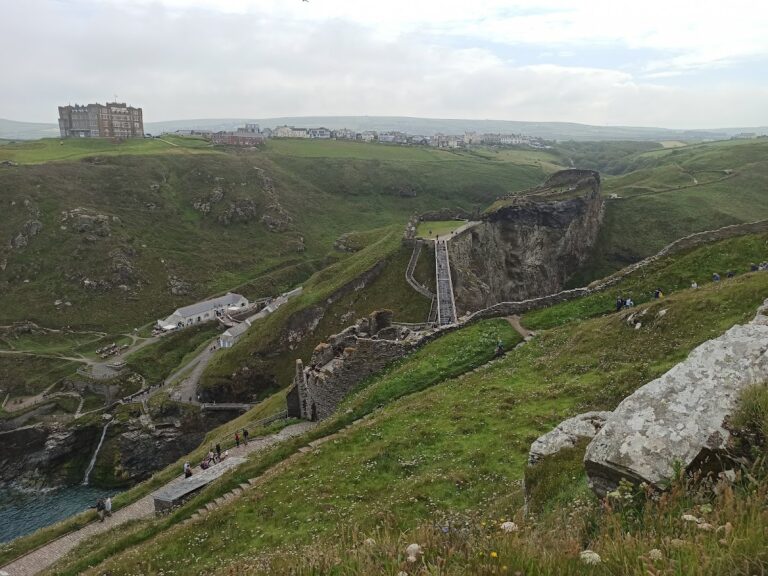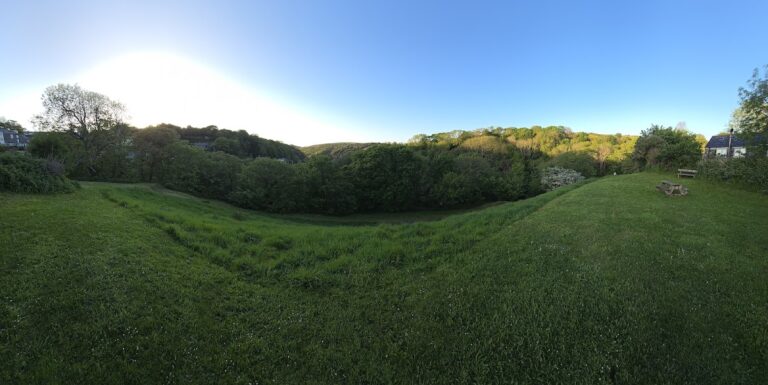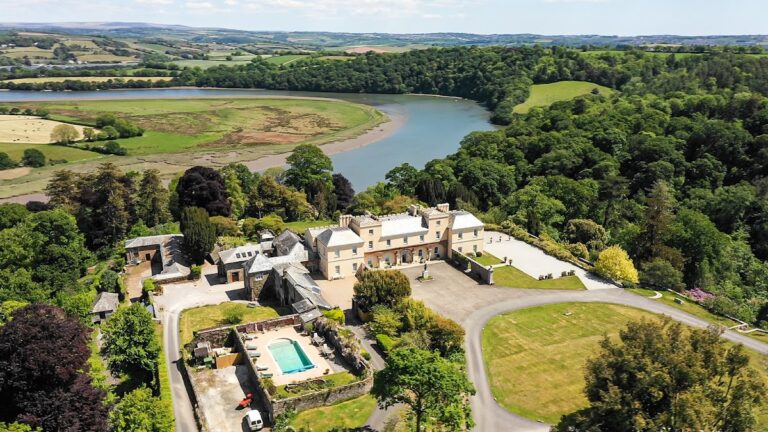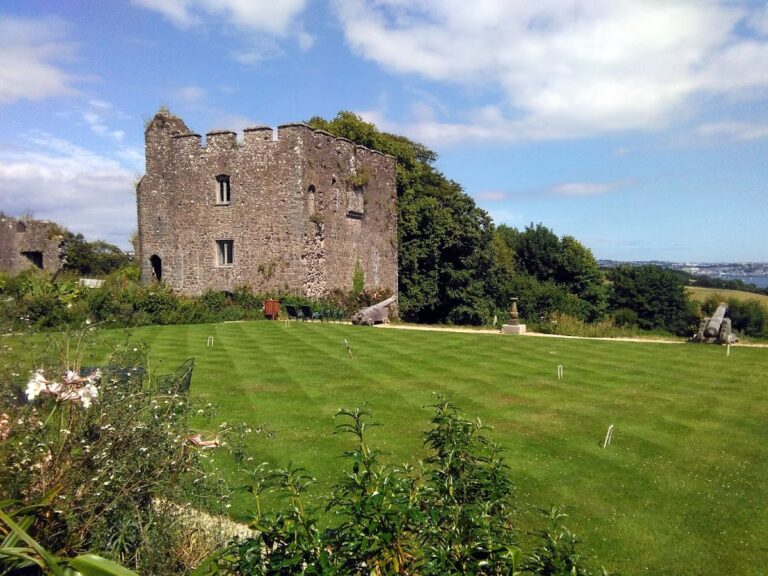Restormel Castle: A Norman Circular Shell Keep in Cornwall, England
Visitor Information
Google Rating: 4.5
Popularity: Medium
Google Maps: View on Google Maps
Official Website: www.english-heritage.org.uk
Country: United Kingdom
Civilization: Medieval European
Remains: Military
History
Restormel Castle stands near the town of Lostwithiel in England and was built by the Normans shortly after their conquest of 1066. Constructed around 1100 by Baldwin Fitz Turstin, the local sheriff, it formed part of the extensive lands held by Robert, Count of Mortain, and served as a fortified residence within the manor of Bodardle.
During the late 12th and early 13th centuries, the castle saw significant improvements under Robert de Cardinham, who replaced earlier wooden structures with substantial stone walls and shaped the castle into a distinctive circular form. At this time, the neighboring settlement of Lostwithiel was established, reflecting the area’s growing importance. Ownership moved through families, including the Cardinham lineage and Thomas de Tracey. In the turbulent political climate of 1264, the castle changed hands without violence to Simon de Montfort but was swiftly reclaimed by royalist forces a year later. Shortly afterward, Isolda de Cardinham granted Restormel to Richard of Cornwall, the brother of King Henry III.
Richard’s son, Edmund, used the castle as his main administrative center and residence, describing it as his “duchy palace.” Under Edmund, the castle functioned as a lavish miniature palace, equipped with early plumbing to bring water from a natural spring. It also became the hub for managing Cornwall’s stannary courts, which oversaw the region’s important tin mining industry. After Edmund’s death in 1299, Restormel returned to royal ownership and from the mid-14th century became one of the principal manors of the Duchy of Cornwall.
Though rarely used as a residence in later years, the castle hosted Edward the Black Prince in the 14th century for feudal ceremonies. Over time, Restormel fell into neglect and disrepair, suffering damage despite attempts at repair, notably under the Black Prince’s orders. By the 16th century, it was mostly in ruins, with materials removed for other uses. During the reign of Henry VIII, the surrounding deer park was converted into farmland, and a nearby manor house was erected on the site of a former chapel lost during the English Reformation. This manor survives today as a listed building under Duchy ownership.
The castle’s only military action came during the English Civil War when Parliamentary troops occupied the site and undertook repairs. Royalist forces led by Sir Richard Grenville captured it in 1644, but by 1649, a Parliamentary survey recorded Restormel as severely damaged and beyond repair or demolition. In the centuries following, the ruins gained interest as a historic monument and eventually came under government care in the 20th century, with legal protection established in the 1980s.
Remains
Restormel Castle is recognized as one of the finest surviving examples of a circular shell keep, a fortification style that emerged in the late 12th century. Its defining feature is a nearly complete circular stone wall, measuring approximately 38 metres in diameter. The wall rises intact to its original height and includes a battlemented parapet with a walkway around 7.6 metres above the ground, providing defensive positions for soldiers. Surrounding the wall is a wide and deep ditch, originally intended to make direct assault difficult.
Built primarily from locally quarried slate, both the massive curtain wall and the inner domestic buildings demonstrate skilled stonework. These internal structures are arranged to conform to the castle’s rounded outline and include essential living spaces such as a kitchen, a hall, private chambers known as a solar, guest rooms, and an ante-chapel—a small chapel area adjacent to the domestic quarters. Significantly, the castle featured advanced plumbing for its time, with water drawn from a natural spring and piped under pressure into these buildings, indicating a level of comfort unusual in medieval fortifications.
The entrance to the inner ward is defended by a square gate tower that survives mainly in ruins but is believed to be one of the earliest stone elements of the castle. Opposite this gateway, there is a projecting square tower that housed the chapel constructed in the 13th century. This chapel tower was adapted during the English Civil War to serve as a gun position, marking a later military reuse of the religious space.
Surrounding the stone shell keep once stood a defensive outer enclosure, or bailey, likely built of timber with earthworks, though no visible traces of this remain today. The castle rests upon a motte, an artificial mound characteristic of Norman castles, with its walls embedded deeply into this earthwork. Later landscaping efforts filled the space inside the surrounding ringwork to create a raised walkway around the ruins, probably during a period when the castle had ceased to serve military purposes.
These remains offer a rare and remarkably preserved glimpse into the design and use of medieval castles in Cornwall, reflecting both military and administrative functions across several centuries.
